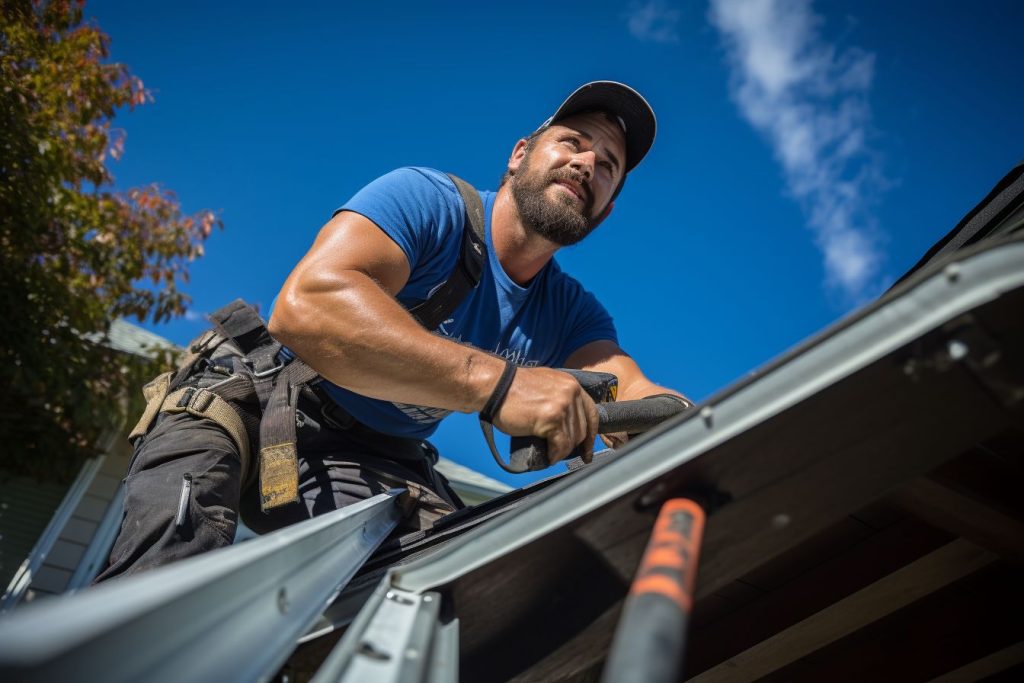Have you discovered a roof leak and need an effective temporary solution? It’s important to know that options like waterproof tarps, plastic sheets, or roofing cement can be a lifesaver in this stressful situation.
This blog post will provide step-by-step guidance on temporarily fixing a roof leak, helping you prevent further water damage until professional help arrives. So stay tuned for some quick fixes that could save the day!
Key Takeaways
- Waterproof tarps and polyethene plastic sheets are effective temporary solutions for roof leaks, protecting against water penetration.
- Roofing cement, silicone, or sealant can fill small gaps and holes where water can seep through.
- Patching or plugging the leak with appropriate materials can effectively seal it temporarily.
Temporary Fixes for a Roof Leak
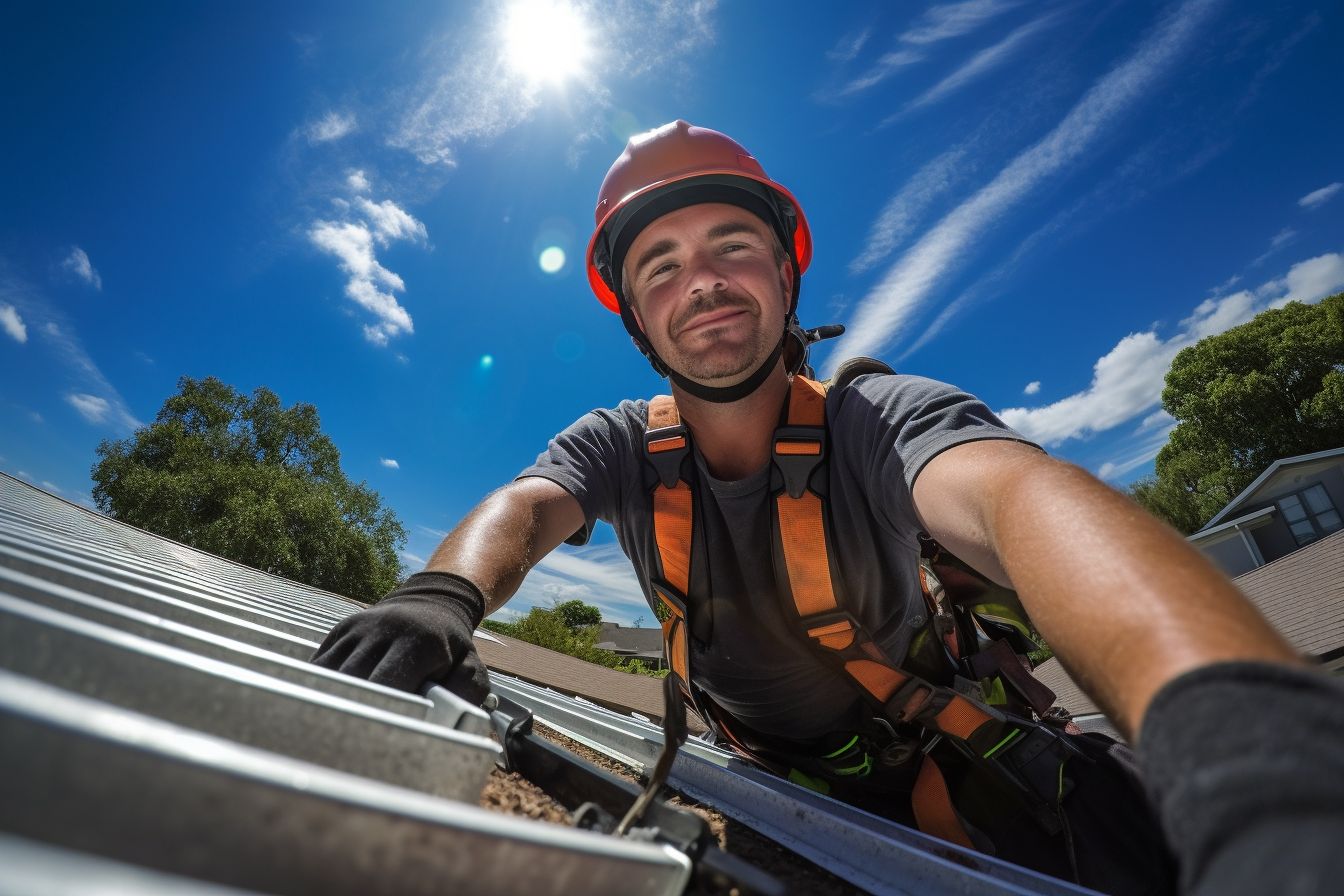
Temporary fixes for a roof leak include using waterproof tarps, polyethene plastic sheets, roofing cement, silicone, or sealant and patching or plugging the area.
Waterproof tarps
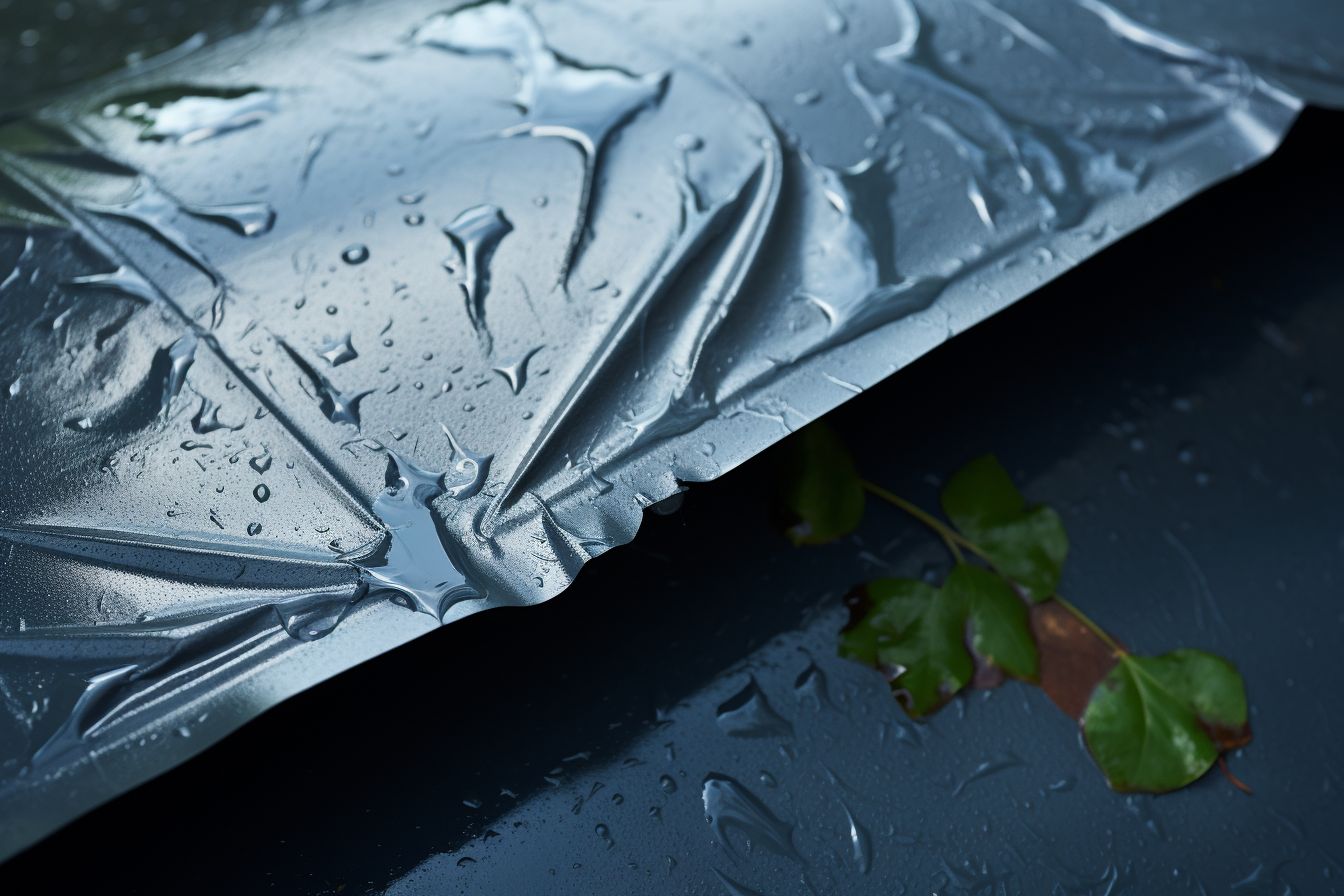
Waterproof tarps are a readily available and effective solution for temporary repairs of roof leaks. They’re notably popular because of their sturdy plastic makeup, which offers reliable resistance against water penetration.
Placing a tarp over the leak helps halt water ingress, assisting in minimising potential damage inside your home. The flexibility of these tarps makes them ideal for covering various sizes and shapes of roof damage.
Notably, when using waterproof tarps for roof patching, there’s no need to worry about nails or other tools that could potentially worsen the situation. This fact enhances their appeal as an emergency fix while waiting for professional help or permanent repair.
Polyethylene plastic sheets
Polyethylene plastic sheets are preferred for temporary roof leak repairs due to their unique waterproof properties. These sheets can be easily installed over the identified leak source, acting as an emergency roof fix and an adequate water barrier.
Professionals often recommend using opaque 6-10 mil string-reinforced polyethene sheeting to ensure maximum effectiveness. This type of plastic roofing thoroughly covers the leaking area, with its edges hanging about six inches on all sides for optimal protection.
Securing these sheets is quite simple – they can be nailed or taped directly onto the rooftop, preventing further water penetration until permanent repair work commences.
Roofing cement, silicone, or sealant
Roofing cement, silicone, or sealant are effective temporary solutions for a leaking roof. These products fill small gaps and holes where water can seep through.
Roof cement excels in dry conditions and is ideal for patching smaller holes. On the other hand, silicone and caulking are also used to halt leaks originating from minimal-sized openings on your roof’s surface.
They form a watertight seal over the compromised area that blocks out rainwater effectively until a permanent fix is applied. Meanwhile, polyurethane-based coatings act as repair compounds suitable for asphalt roofs; these spray-on products provide additional protection against leaks.
Using these waterproofing tools can help mitigate damage while you seek professional assistance for more comprehensive repairs.
Patching or plugging
Patching or plugging is another temporary solution for fixing a roof leak. To patch the leak, you can use a powder similar to roofing cement that seals the area and prevents water infiltration.
Alternatively, you can plug the leak by pouring water and powder into it, creating a chemical reaction that resembles cement. Both methods provide effective sealing solutions to stop the leak temporarily before permanent repairs are made.
Quick Fixes for Small Roof Leaks
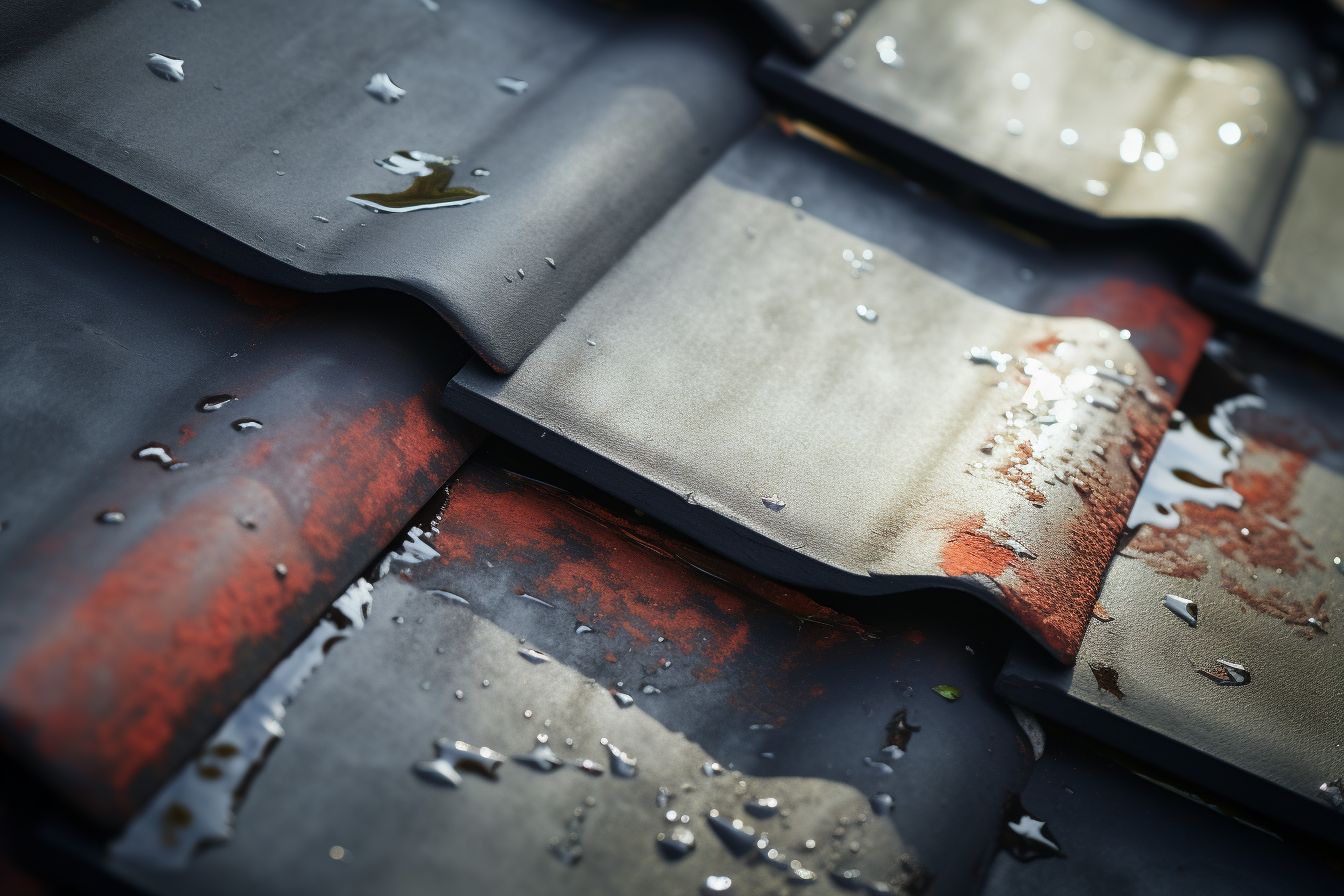
Quick fixes for small roof leaks can provide temporary relief until a professional can address the underlying issue. One option is to use roofing cement, silicone, or sealant to seal the leak.
These materials are designed to create a waterproof barrier and can be applied directly to the affected area. Another quick fix is patching or plugging the leak with appropriate materials.
This involves filling holes or damaged shingles using suitable products like adhesive ice-and-water barrier strips. Remember, while these quick fixes may temporarily stop the leak, it’s essential to consult a professional for a permanent solution to prevent further damage.
Regularly monitoring the temporary fix for any signs of additional leaks or damage is also essential for maintaining your roof’s integrity and preventing water-related issues in your home.
Steps to Temporarily Fix a Roof Leak
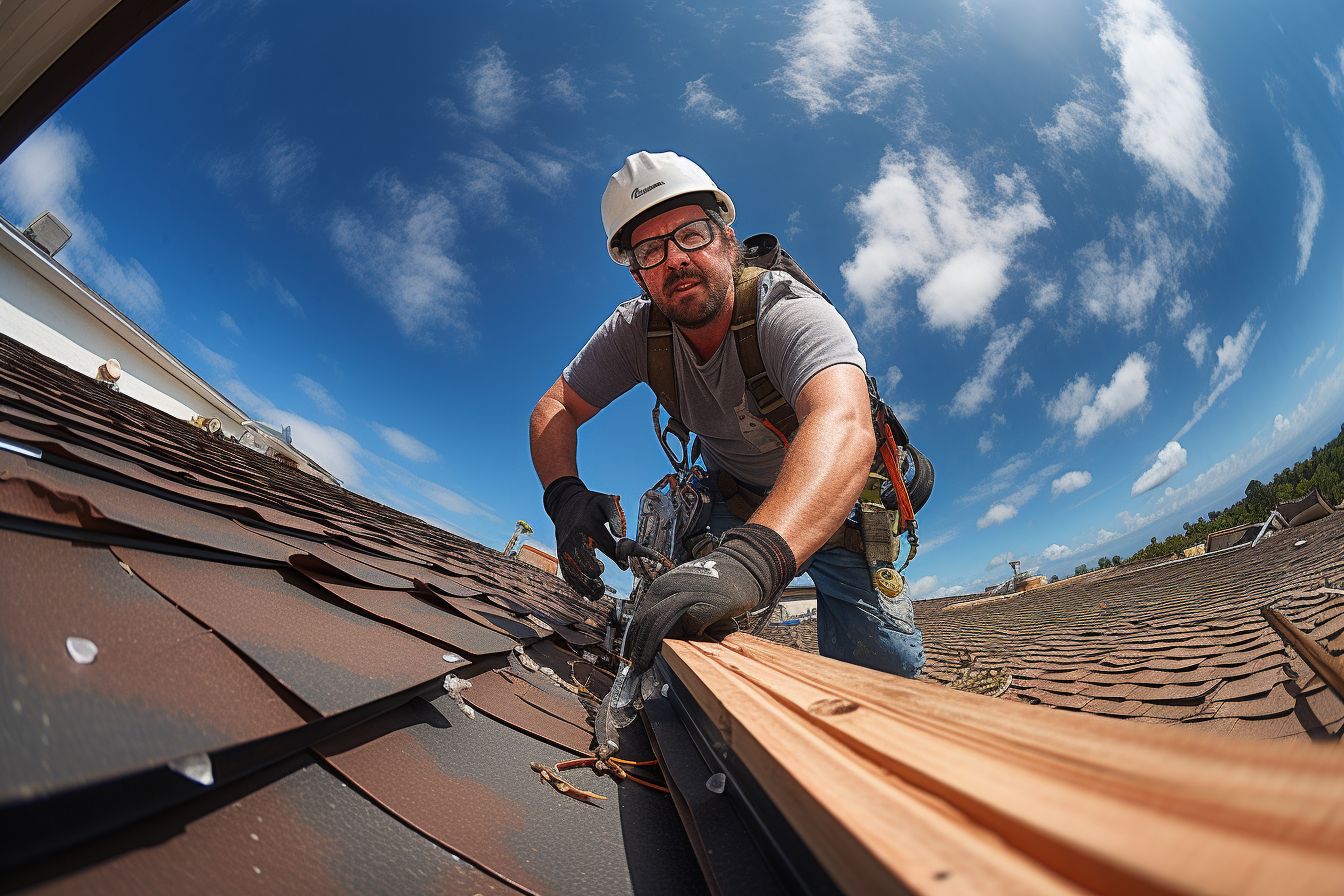 Identify the source of the leak, clear debris and remove any damaged materials, apply the temporary fix (tarp, plastic sheets, cement, or patching), and ensure a watertight seal.
Identify the source of the leak, clear debris and remove any damaged materials, apply the temporary fix (tarp, plastic sheets, cement, or patching), and ensure a watertight seal.
Identify the source of the leak.
Finding the source of a roof leak is crucial for effectively fixing the issue. To locate the source, you can start by inspecting your house’s inside and outside. Look out for water stains or signs of water infiltration on your ceiling, as they often indicate a roof leak.
Additionally, switch off any outside light sources and check for spots where daylight enters through your roof, as these areas may be potential sources of leaks. By identifying the exact location of the leak, you can take appropriate steps to address it and prevent further damage to your roof and home.
Clear debris and remove any damaged materials
To temporarily fix a roof leak, one of the key steps is to clear debris and remove any damaged materials. This is crucial in preventing further water damage until professional help can arrive.
Homeowners can use a putty knife to carefully dig around the damaged area and identify rotten or corroded spots. Once identified, additional caulk can be applied to seal these areas temporarily.
Before applying any temporary fixes like tar paper or caulk, it is essential to thoroughly clear away debris and remove any damaged materials from the affected area.
Apply the temporary fix (tarp, plastic sheets, cement, or patching)
To temporarily fix a roof leak, you can apply various methods, such as using a waterproof tarp, plastic sheets, roofing cement, or patching. These temporary fixes prevent further water damage until permanent repairs can be made.
A waterproof tarp provides reliable protection against leaks and is commonly used by roofers. Plastic sheets are an inexpensive option that can be used to cover a hole in the roof.
Roofing cement helps patch damaged areas or seal flashing to prevent water infiltration. Patching the affected area with appropriate materials is another method that helps stop the leaking temporarily.
Ensure a watertight seal.
To effectively temporarily fix a roof leak, it is crucial to ensure a watertight seal. This can be achieved using waterproof tarps, polyethene plastic sheets, roofing cement, silicone, or sealant.
When applying these materials, it is important to press firmly and ensure no gaps or areas where water could seep through. Additionally, patching any holes in the roof using roofing cement or silicone/caulk will help create a secure seal and prevent further water damage.
By taking these steps to ensure a watertight seal, you can effectively protect your home from the damaging effects of water leakage.
Remember: A proper temporary fix should prioritise sealing off the leaking area completely and preventing moisture from getting inside. Regularly monitor the temporary fix for signs of further damage and consult a professional for a permanent solution as soon as possible.
Important Considerations
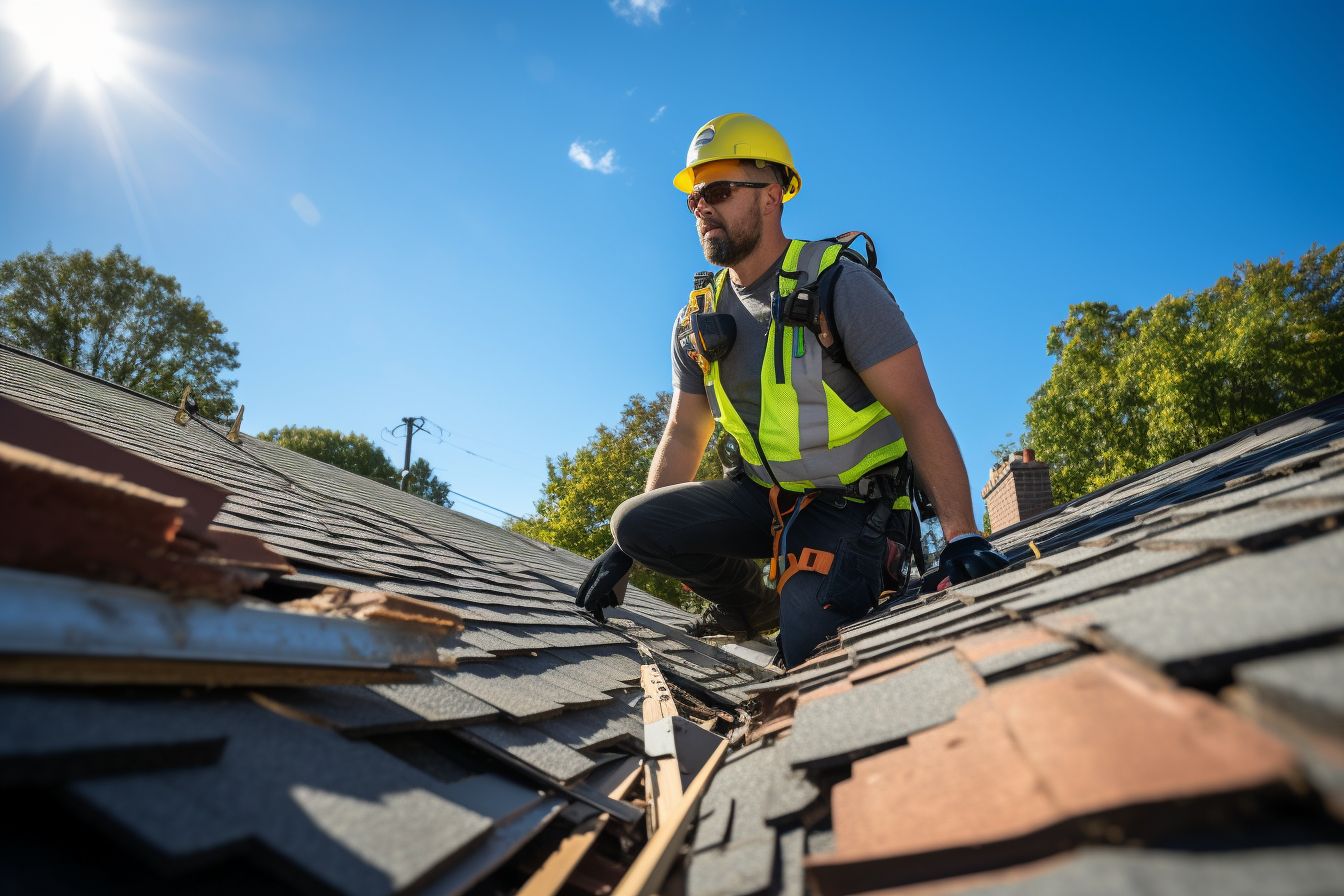 Consult a professional for a permanent fix and regularly monitor the temporary fix for signs of further damage. Prioritise safety when working on the roof and plan for permanent repairs to prevent future leaks.
Consult a professional for a permanent fix and regularly monitor the temporary fix for signs of further damage. Prioritise safety when working on the roof and plan for permanent repairs to prevent future leaks.
Discover expert tips and essential factors to consider in fixing your roof temporarily.
Consult a professional for a permanent fix.
It is highly recommended to consult a professional to ensure a lasting solution for your roof leak. A licensed roofing consultant or an experienced roof repair specialist can provide you with the expertise needed to identify the root cause of the leak and implement a permanent fix.
They have the knowledge and skills to assess the extent of damage, recommend appropriate repairs, and ensure that all necessary steps are taken to prevent future leaks. Consulting a professional saves you time and effort and helps avoid potential risks or further damage caused by improper DIY repairs.
Trusting in an expert roof maintenance professional or a reliable roof restoration contractor will give you peace of mind, knowing that your home is protected from water intrusion issues in the long term.
Regularly monitor the temporary fix for any signs of further damage
Regularly inspect the temporary fix to prevent additional damage. Monitoring helps identify potential issues or deterioration in the repair, allowing for timely adjustments or repairs.
By conducting routine checks and ongoing assessments, you can detect any new leaks or water damage that may have occurred since the temporary fix was applied. Consistent scrutiny is crucial to ensure the effectiveness and longevity of the repair, reducing the risk of extensive damage.
Prioritising regular maintenance and periodic evaluations will help promptly address any new leaks or issues that arise, keeping your roof protected in the long run.
Prioritise safety when working on the roof.
Safety should be the top priority when working on the roof. Roofers face many occupational hazards, such as working at heights, using power tools, and being exposed to hazardous substances.
To ensure safety, following fall protection protocols and using personal protective equipment like helmets and harnesses is important. Regular safety training is essential for all workers involved in roof maintenance or repairs.
Additionally, keeping the work area clean and debris-free helps prevent accidents. By prioritising safety measures, we can minimise risks and create a safer workplace environment for everyone involved in roofing projects.
Plan for permanent repairs to prevent future leaks.
To ensure long-term protection for your roof and prevent future leaks, it is crucial to plan for permanent repairs. Performing routine maintenance on your roof is the best way to identify any potential issues before they become significant problems.
Regular inspections, timely repairs, and preventive measures can significantly reduce the risk of leaks caused by weather damage or wear and tear. By prioritising roof maintenance and taking proactive steps to address any issues promptly, you can extend the lifespan of your roof and minimise the chances of costly water damage in your home.
Conclusion

In conclusion, it is possible to temporarily fix a roof leak using various methods such as waterproof tarps, plastic sheets, roofing cement, or patching. It is important to identify the source of the leak and ensure a watertight seal.
While these fixes can provide temporary relief, consulting a professional for a permanent solution and prioritising safety when working on the roof is recommended.
FAQs
1. What are the signs of a roof leak?
Signs of a roof leak include water stains on the ceiling or walls, dripping water, mould or mildew growth, and peeling paint or wallpaper.
2. How can I temporarily fix a roof leak?
You can temporarily fix a roof leak by applying roofing cement, using roofing tape or patches, or placing a tarp over the affected area to prevent further water damage.
3. Do I need professional help to fix a roof leak temporarily?
In most cases, you can handle temporary fixes for minor leaks yourself. However, if you’re unsure how to proceed or if the damage is extensive, it’s best to consult a professional roofer.
4. Can I use household items to temporarily fix a roof leak?
Several household items can be used for temporary fixes, such as buckets to catch dripping water, towels or rags to soak up moisture, and plastic sheets to cover furniture and valuables.
5. How long will a temporary fix last for a roof leak?
The duration of a temporary fix for a roof leak depends on factors such as the severity of the damage and weather conditions. It’s important to arrange for permanent repairs as soon as possible after implementing any temporary fixes.

